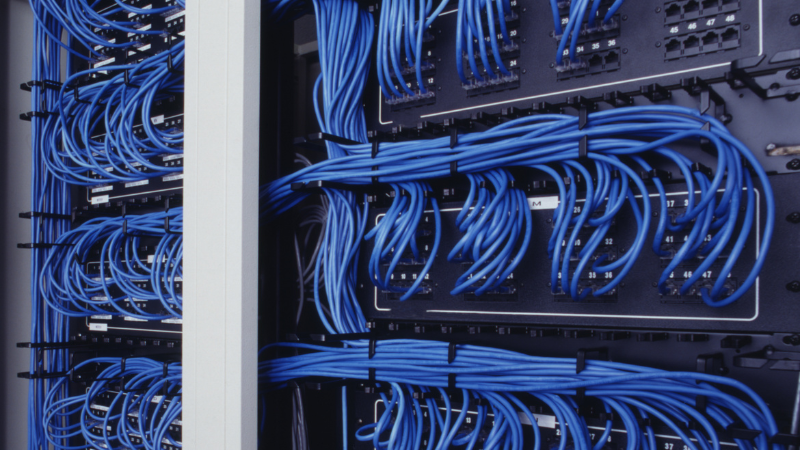5 Big Differences Between CAT and Fiber Optic Cabling
When it comes to setting up a network infrastructure for businesses, choosing the right type of cabling is crucial. Two popular options that are often considered are CAT (Category) and Fiber Optic Cabling. While both serve the purpose of transmitting data, they have distinct differences that can impact performance, speed, and cost.

Structured cabling is the backbone of a business’s communication network, providing a reliable and organized system for all your technology needs. Investing in structured cabling not only ensures seamless connectivity but also reduces downtime and maintenance costs in the long run. By streamlining your business’s data and voice infrastructure through structured cabling, you are laying a strong foundation for future scalability and flexibility. It not only enhances efficiency but also adds value to your business operations by facilitating smoother communication, faster data transfer, and easier troubleshooting.
Both CAT and Fiber Optic Cabling have their advantages and disadvantages, and the choice between the two will ultimately depend on your business’s specific needs and requirements. Whether you prioritize speed, distance, interference resistance, ease of installation, or cost, understanding the differences between the two types of cabling can help you make an informed decision for your networking infrastructure.
5 Big Differences Between CAT and Fiber Optic Cabling
- Speed and Bandwidth
One of the most significant differences between CAT and fiber optic cables is the speed and bandwidth they offer. Fiber optics is known for its high-speed data transmission capabilities, making it ideal for businesses that require fast and reliable connectivity. On the other hand, CAT cabling, while still efficient, has lower bandwidth and speed compared to fiber optics. If your business relies heavily on internet connectivity and data transfer, fiber optic cables may be the better choice. - Distance
Another key difference between CAT and fiber optics is the distance they can cover without experiencing signal loss. Fiber optic cables can transmit data over much longer distances without any degradation in signal quality, making it ideal for large office spaces or buildings. CAT cabling, on the other hand, has limitations when it comes to distance and may require additional equipment such as repeaters to extend the reach. - Interference
Fiber optic cabling is immune to electromagnetic interference, making it a reliable choice in environments where interference is a concern. This immunity allows for consistent data transmission without any disruptions, which is essential for businesses that operate in busy or high-interference areas. CAT cabling, while shielded to some extent, can still be susceptible to interference, which may impact network performance. - Installation and Maintenance
The installation and maintenance of CAT and fiber optics also differ significantly. Fiber optic cables require specialized tools and expertise for installation, as they are more delicate and intricate than CAT cabling. On the other hand, CAT cabling is relatively easier to install and maintain, making it a cost-effective option for businesses looking to set up a network quickly and efficiently. However, it’s essential to consider the long-term benefits and durability of fiber optics when making your decision. - Cost
Last but not least, cost is a crucial factor to consider when choosing between CAT and fiber optic cables. Fiber optics is generally more expensive upfront due to the higher quality materials and specialized equipment required for installation. However, in the long run, they can be more cost-effective as they offer higher performance, reliability, and longevity compared to CAT cabling. It’s essential to weigh the initial investment against the long-term benefits when making a decision based on cost.
Both CAT and fiber optics have their strengths and weaknesses. CAT cables are cost-effective and practical for short-distance, low-to-moderate bandwidth needs. Fiber optics, with their superior speed, bandwidth, and distance capabilities, are ideal for high-performance and long-distance applications. By assessing your current and future network requirements, you can select the cabling solution that best aligns with your goals.
Embracing structured cabling is a strategic move that can optimize your business’s productivity, enhance its competitiveness, and set you up for sustainable growth in today’s fast-paced digital landscape. Consulting with a professional, like WTS, means you’ll get a an expert assessment of your business’s needs. We can help you determine the best option for optimal performance and connectivity.
Want more information on our Structured Cabling services?Let’s talk. 843.236.6436.
Ready for IT that WORKS for your business?

Schedule a 15-minute meeting with our team.
- Managed IT Services
- Business Phone Systems
- Managed Print
- Cybersecurity
- Cloud Services
- Data Cabling
